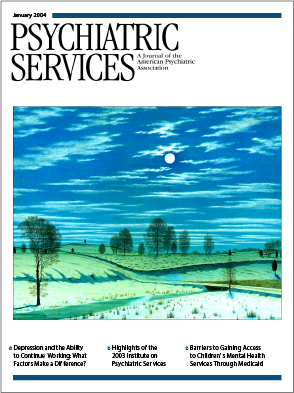A Study of Long-Stay Patients Resettled in the Community After Closure of a Psychiatric Hospital in Italy
Abstract
OBJECTIVE: This study examined the outcomes of all patients who were discharged from an Italian psychiatric hospital into community residences three to four years after discharge. METHODS: The total population of Antonini Mental Hospital near Milan on January 1996 (N=337) was assessed by using the expanded Brief Psychiatric Rating Scale and the overall social behavior and social role functioning sections of the Disability Assessment Schedule. The hospital closed in 1999, and all patients who were resettled in the community were reassessed in September 2002. Residential stability, use of inpatient services, and mortality were also investigated. RESULTS: Of the 337 patients, 64 died before discharge, 110 were transferred to nursing homes, and 163 were discharged to the community. The follow-up of patients who moved to the community showed no differences in psychopathology or social role functioning. In terms of overall social behavior, a significant increase was observed in the number of patients with mild or no disability, and a corresponding decrease was observed in the number with moderate disability. Most patients showed residential stability. The rate of postdischarge mortality was low, and there were no deaths due to accident or suicide. The number of admissions to acute psychiatric wards was limited. CONCLUSIONS: A population characterized by a long history of illness and severe disability underwent a radical change in care setting and living arrangement with favorable outcomes, as indicated by the absence of adverse events or clinical deterioration and by some improvement in social behavior. The results confirm that most long-stay patients can successfully leave psychiatric hospitals and live in community residences.



